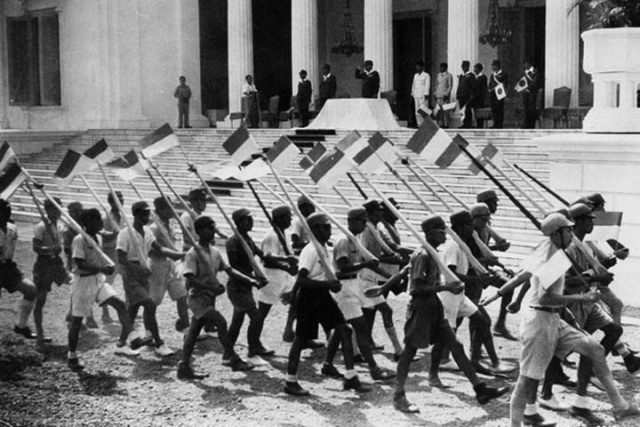Tonarigumi – The Origins of Indonesia’s Rukun Tetangga
Source: http://disk.mediaindonesia.com/thumbs/1200x-/news/2016/10/tni.jpg
During WWII Japanese expansion took their Imperial war-machine to many Far-Eastern Asian Nations where brutal occupations ensued during their reign, including Indonesia. Territories occupied by the Japanese are distributed between the Imperial Army and the Imperial Navy, two rivalling branches of the Japanese Imperial Forces. The Imperial Army took control of Java where in 1944 they established what was then known as “Tonarigumi”.
Tonarigumi was a civil structure that was intended to enforce and solidify the control and watch of the Japanese Imperial Forces in the territories which they are occupying and to ease communications between the occupying Japanese military and their Indonesian subjects, and communication between the Indonesian people themselves. Tonarigumi served as a basis for the Japanese forces to train the conscripted Indonesian villagers which would then be sent to an auxiliary force in other territories or as a local militia force to be used against the quickly advancing Allied forces.
Each Tonarigumi was made up of 10 – 20 heads of families, led by a single Tonarigumichō where around 5 of them would make up to a higher structure known as Chonaikai, the size of it usually includes a whole village. At their height, in Java alone there were 508.745 heads of Tonarigumi. Other occupied Japanese territories such as the Korean Peninsula and most of the South Eastern Asian nations were also enforced to use the Tonarigumi structure.
But the Japanese Imperialistic ambitions was not to last, as in the Summer of 1945, the Japanese Empire surrendered to the Allied forces. Nations such as South Korea, Vietnam, and the Philippines erased the Tonarigumi structure formally in 1947, but in some nations such as Indonesia, Tonarigumi were still used albeit with a different name. Tonarigumi in Indonesia was renamed and reformed into “Rukun Tetangga” and the Chonakai into “Rukun Warga”, where they no longer serve for a military use and instead used for the civil administrative service such as the creation of identity cards, residence management, creation of statement letters, and other administrative services in the newly formed Indonesian Republic.


